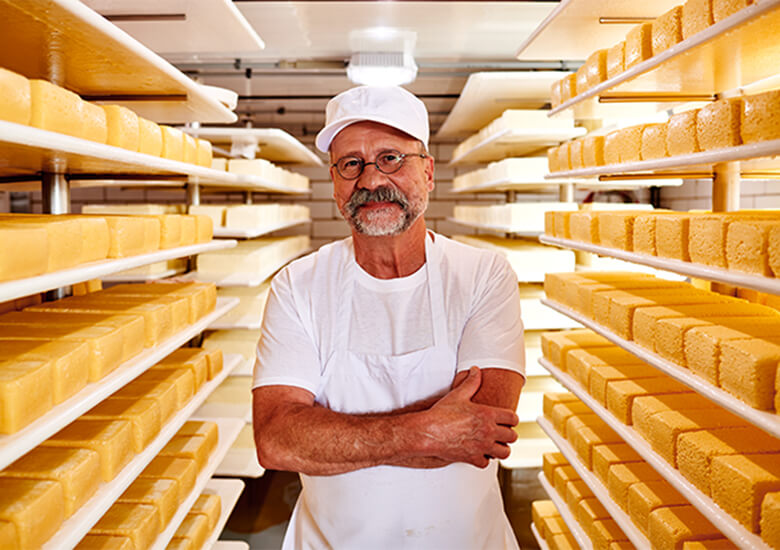A Preference of Authenticity: Floridia Cheese Melbourne and Its Workmanship
A Preference of Authenticity: Floridia Cheese Melbourne and Its Workmanship
Blog Article
Opening the Keys of Artisanal Cheese Making: A Step-by-Step Do It Yourself Overview
In the realm of culinary workmanship, artisanal cheese making stands as a testimony to the fragile equilibrium in between practice and advancement. As we get started on this trip to demystify the art of developing elegant cheeses, we are faced with a tapestry of abilities and tricks waiting to be unwinded.
Picking the Right Milk
When beginning on the journey of artisanal cheese production, the selection of milk plays an essential role in determining the quality and qualities of the last item. The kind of milk selected influences the taste, texture, and on the whole account of the cheese.
When choosing milk for cheese production, it is vital to take into consideration the fat web content. Higher fat web content in milk can result in a creamier and richer cheese, while reduced fat material may lead to a drier and stronger appearance. In addition, the resource of the milk, whether from cows, goats, lamb, or buffalo, contributes unique flavors and attributes to celebrity (Floridia Cheese Thomastown). Each sort of milk brings its own nuances, permitting a variety of cheese ranges to be crafted based upon the picked milk. Inevitably, the option of milk is an essential decision that sets the structure for an effective artisanal cheese-making endeavor.
Culturing and Coagulating
To start the cheese-making process, the critical steps of culturing and coagulating should be meticulously implemented to change milk right into curds and whey. Culturing entails presenting valuable microorganisms to the milk, which then begins the fermentation process. These germs convert lactose (milk sugar) into lactic acid, producing the acidic setting needed for coagulation. The kind of culture used can considerably impact the flavor, structure, and ripening of the last cheese item.

The timing and temperature control throughout culturing and coagulation are essential variables that affect the final end result of celebrity. Proper implementation of these steps is necessary to make certain the preferred texture, flavor, and consistency of the artisanal cheese being produced.
Draining Pipes and Pressing Curds
After the milk healthy proteins have actually coagulated and the curds have been cut to launch whey, the next vital action in artisanal cheese making involves draining and pushing the curds to achieve the desired structure and uniformity of the final cheese product. The time for draining can differ depending on the type of cheese being made and the preferred dampness content.
When the curds have actually completely drained, the next step is pressing. Pressing assists eliminate any remaining whey and compacts the curds to develop a strong cheese wheel. Pushing can be done making use of specialized cheese helpful site presses that use gentle and constant stress over a time period. The duration and pressure used throughout pushing will certainly affect the final structure of celebrity, from soft and velvety to hard and company. Appropriate pressing and draining are essential steps that significantly impact the quality and characteristics of the artisanal cheese being generated.
Aging and Flavoring Methods
Carrying out meticulous aging and flavor techniques is essential in boosting the depth and intricacy of artisanal cheeses, elevating their preference profiles to exquisite degrees of improvement and elegance. Aging plays a crucial function in creating the unique flavors and appearances that distinguish artisanal cheeses.
Flavoring strategies also add significantly to the final taste of artisanal cheeses. Cheesemakers might select to introduce extra tastes by integrating ingredients such as herbs, flavors, or also fruits into the cheese during the production procedure. In addition, some cheeses are cleaned or rubbed with different liquids, such as brine or alcohol, to boost their flavors and appearances.
Wrapping and Saving Cheeses

Final Thought
In final thought, understanding the art of artisanal cheese making entails carefully selecting the best milk, complying with exact culturing and coagulating processes, draining pipes and pushing curds properly, and making use of different aging and flavor methods. Bear in mind to wrap and store your cheeses correctly to make sure ideal taste and structure advancement.
Each kind of milk brings its very own nuances, allowing for a large variety like this of cheese ranges to be crafted based on the selected milk.After the milk proteins have coagulated and the curds have been cut to release whey, the next essential step in artisanal cheese making includes draining and pressing the curds to attain the wanted appearance and uniformity of the last cheese product. Many cheeses should be covered in wax paper or cheese paper to permit them to take a breath while securing them from drying out. For cheeses that need to continue aging, such as bloomy rinds or washed peels, guarantee they are kept in an amazing atmosphere like a cheese cave or a refrigerator established to the ideal temperature level. By paying focus to the covering and storage of artisanal cheeses, cheese makers and fanatics can maintain the stability of these delicacies and totally appreciate their complicated flavors.
Report this page